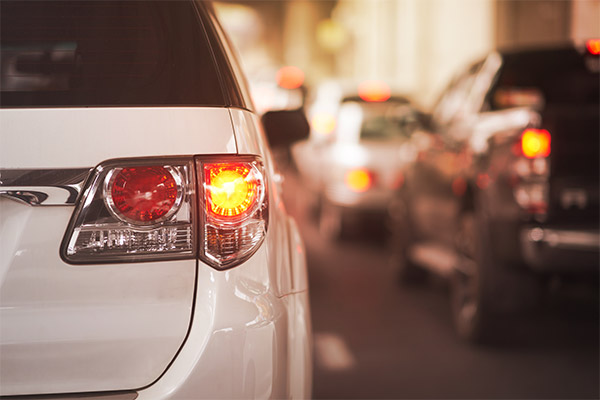Who Is at Fault in a Right Turn Accident?
Snapshot
Right-turn accidents aren’t as common as other car accidents but determining blame can be just as complicated to sort out when they involve busy intersections, as they typically do.
Not surprisingly, the majority of car accidents in the United States happen in intersections. This was the case long before the potential distractions of cell phones and GPS screens became our constant travel companions.
Those verbal GPS messages that tell you you’ve reached your destination are meant to be helpful but often have you anxiously scanning the landscape for that destination while traffic is criss-crossing in front of you.
In the subset of intersection accidents, left turn collisions and rear-end accidents dominate the statistics.
But while right-turn accidents aren’t nearly as common, they’ve become more prevalent given right-turn-on-red laws – especially accidents involving pedestrians and bicyclists.
If you’ve been involved in a right-turn accident, it’s important to know what factors might determine fault in the opinion of police called to the scene and insurance companies processing an accident claim.
Determining Fault in a Right Turn Collision
A right-turn accident sounds self-explanatory – a driver is turning right, sometimes merging into traffic, and experiences a collision. But not all right-turn accidents are created equal.
Drivers turning right on red are typically deemed at fault in an accident if they demonstrated a failure to yield or ignored foot traffic in a crosswalk.
But different scenarios can affect liability.
- Was the driver traveling straight through an intersection speeding to beat a yellow light and collided with a car turning right on red?
- Did the driver turning right, fail to do so after a full stop?
- In assessing oncoming traffic, did the driver turning right fail to see a pedestrian? Or a bicyclist?
- Did the driver turning right fail to account for traffic stopped ahead of them and did that failure result in rear-ending the car in front of them?
Obviously, criminal negligence such as driving while intoxicated or a traffic violation like speeding or texting while driving can dictate the assessment of blame.
In states where comparative negligence is the law, though, a right-turn accident – especially when two drivers stake claim to a right of way – can often result in shared blame.
Financial Compensation After a Right Turn Accident
The assessment of blame determines which driver’s insurance company is responsible for compensation. Compensation can entail:
- Property damage
- Medical bills
- Physical therapy or rehab costs
- Lost wages
- Lost earning power
- Pain and suffering
How to File a Claim After a Right Turn Accident
The process of filing a claim begins at the accident scene.
The steps you take – whether you believe you’re at-fault or the victim of driver negligence – are important in making a successful claim
- Never leave the scene of an accident.
- Call the police, and 911 if serious injuries occurred.
- Get the appropriate medical tests to determine the extent of your injuries.
- Collect insurance information from the other driver/drivers and contact information.
- Take pictures of the specific damage. Also, wider-angle pictures of the positioning of the cars and the intersection can help support your claim as the victim of the accident.
- Be cooperative with police and other driver(s) but don’t admit blame. Whatever you say can be used against you in a claim or lawsuit.
- Contact an experienced accident attorney for a free consultation.
- Call your insurance company. The terms of your policy may necessitate that you inform insurance of an accident within a specified period of time.
If you weren’t at fault, in most states you can file third-party liability and property damage claims with the at-fault driver’s insurance company.
You can do this either on your own (often through the other driver’s insurance company online claims portal), or with help from your insurance company or an accident attorney.
In the 12 no-fault states, each driver involved in a right-turn accident files a personal injury claim with their own insurance companies. The victim in such an accident, files a property damage claim with the insurance company of the at-fault driver.
Remember, in any kind of accident, what seems obvious in regard to negligence or blame isn’t always so clear when insurance company adjusters get involved and look to mitigate their liability.
Depending on the extenuating circumstances, navigating the car accident claim process can be as challenging as the busiest intersection at rush hour. There is no charge for calling most personal injury attorneys. Let them help you weigh your options.
Sources:
- Misra, N. (2021, February 25) In a Right Turn On Red Accident, Who is at Fault? Retrieved from https://www.natashamisralaw.com/post/right-turn-on-red-accident-fault
- NA. (ND) Who is at Fault for an Accident Involving a Driver Turning Right? Retrieved from https://www.sburkelaw.com/faqs/who-is-at-fault-for-an-accident-involving-a-driver-turning-right-.cfm
- NA. (2021, August 3) Who is At Fault in a Right-Turn Car Accident? Retrieved from https://www.sburkelaw.com/faqs/who-is-at-fault-for-an-accident-involving-a-driver-turning-right-.cfm
- Schmitt, A. (2018, May 15) It’s Time for Cities to Rethink Right Turns on Red. Retrieved from https://usa.streetsblog.org/2018/05/15/its-time-for-cities-to-rethink-right-turns-on-red/

